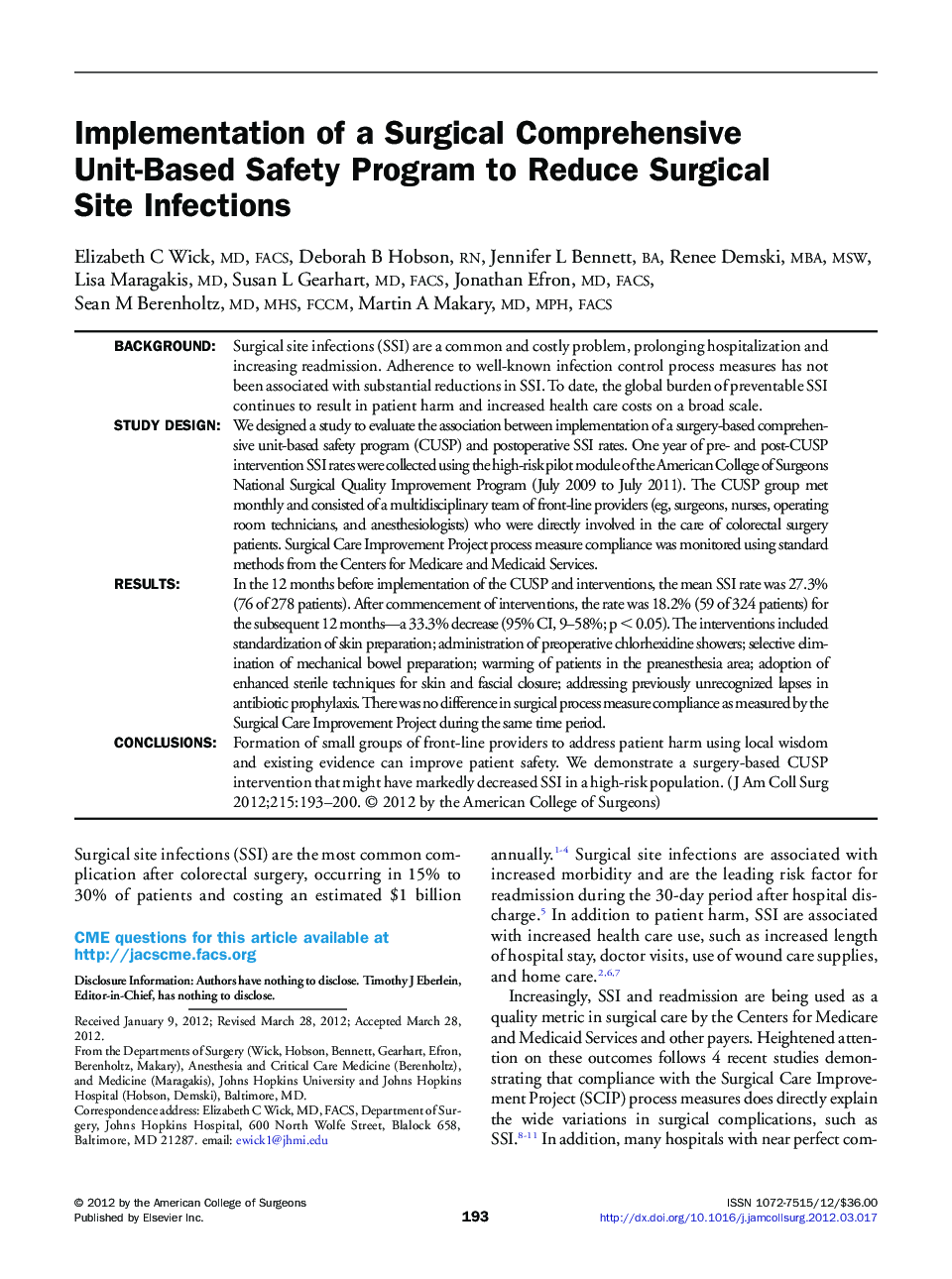| کد مقاله | کد نشریه | سال انتشار | مقاله انگلیسی | نسخه تمام متن |
|---|---|---|---|---|
| 4292269 | 1612257 | 2012 | 8 صفحه PDF | دانلود رایگان |

BackgroundSurgical site infections (SSI) are a common and costly problem, prolonging hospitalization and increasing readmission. Adherence to well-known infection control process measures has not been associated with substantial reductions in SSI. To date, the global burden of preventable SSI continues to result in patient harm and increased health care costs on a broad scale.Study DesignWe designed a study to evaluate the association between implementation of a surgery-based comprehensive unit-based safety program (CUSP) and postoperative SSI rates. One year of pre- and post-CUSP intervention SSI rates were collected using the high-risk pilot module of the American College of Surgeons National Surgical Quality Improvement Program (July 2009 to July 2011). The CUSP group met monthly and consisted of a multidisciplinary team of front-line providers (eg, surgeons, nurses, operating room technicians, and anesthesiologists) who were directly involved in the care of colorectal surgery patients. Surgical Care Improvement Project process measure compliance was monitored using standard methods from the Centers for Medicare and Medicaid Services.ResultsIn the 12 months before implementation of the CUSP and interventions, the mean SSI rate was 27.3% (76 of 278 patients). After commencement of interventions, the rate was 18.2% (59 of 324 patients) for the subsequent 12 months—a 33.3% decrease (95% CI, 9–58%; p < 0.05). The interventions included standardization of skin preparation; administration of preoperative chlorhexidine showers; selective elimination of mechanical bowel preparation; warming of patients in the preanesthesia area; adoption of enhanced sterile techniques for skin and fascial closure; addressing previously unrecognized lapses in antibiotic prophylaxis. There was no difference in surgical process measure compliance as measured by the Surgical Care Improvement Project during the same time period.ConclusionsFormation of small groups of front-line providers to address patient harm using local wisdom and existing evidence can improve patient safety. We demonstrate a surgery-based CUSP intervention that might have markedly decreased SSI in a high-risk population.
Journal: Journal of the American College of Surgeons - Volume 215, Issue 2, August 2012, Pages 193–200